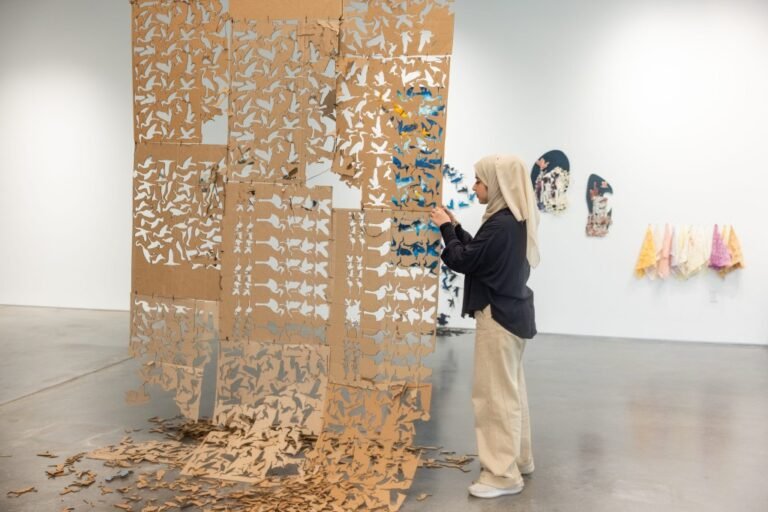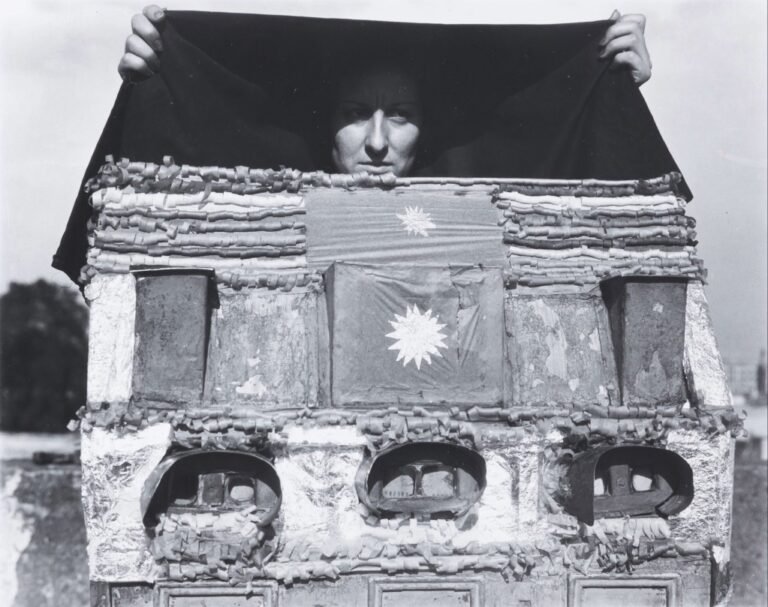

Image licensed via Adobe Stock
From upstream exploration to downstream delivery, these studio heads reveal where artificial intelligence is genuinely adding value and where it’s falling short.
If you work in a creative studio, you’ve likely spent some of the past two years lying awake at night, wrestling with questions about AI that feel both urgent and impossible to answer. Should you be using it more? Will you fall behind if you’re not? Will clients expect you to deliver twice as much work in half the time? And ultimately, is AI coming for your livelihood?
We don’t have clear answers to any of those questions yet. But a clearer picture is emerging of where the technology actually matters and where it doesn’t.
To put this into terms people can understand, we spoke to seven creative leaders from established UK studios to understand how AI is reshaping their work. And the picture they paint is more nuanced than either the optimists or the pessimists would have you believe.
Speed without substance
Right now, the biggest impact of AI on the creative process appears to be upstream, in the early stages of projects. In the words of Beth Andlaw, co-founder and communications director at FORM Brands Studio, “Initial research, exploration, and concepting can now happen much faster.” But she’s quick to add a warning to “accept it’s a useful starting point, and not the result”.
A recent project illustrates both the promise and limitations of AI today. “We rebranded a company and then supported them on an event stand,” she explains. “Their production team used our creative direction to generate 30 different stand concepts using AI tools. Some were miles off, but others were brilliant. Either way, it produced ideas that wouldn’t have appeared through a traditional process.”
The distinction matters. In her mind, AI is “an accelerator and provocateur. It opens doors faster and broadens the creative conversation. We can show clients more options earlier, test ideas visually, and align far quicker. It means we can spend more time refining what matters: the story, the craft, and the emotion behind the work.”
The authenticity problem
At the same time, not everyone is rushing to embrace every aspect of AI integration. Gabryel Shadbolt, senior strategist at Wildish & Co, raises a concern about authenticity. “I’ve let the occasional typo slip into a deck,” she admits. “The few times it happened this year, I’ve delivered the same response: ‘At least you know I didn’t get AI to write it.'”
This leads her to make an interesting prediction. “Perhaps we’ll soon start using artful mistakes or messiness to feign authenticity in copy, too. I’m already using en dashes in place of their often grammatically correct, but now suspicious sister, the em dash, with similar intentions.”
She adds: “The design world readily fetishises the hand-drawn: look at all the gritty pencil sketches we did, before doing it in Illustrator anyway. Will copy follow suit?”
A familiar pattern
Matteo Di Iorio, creative director at Interstate, places all this within a longer trajectory. “AI is a tool, not the beginning or the end of an idea,” he argues. “Like every major tech shift before it, from computers to the internet, to Adobe, AI is expanding how we think and create. It encourages us to move beyond visuals and engage with language, strategy and narrative in new ways.”
“This isn’t a battle between human and machine creativity,” he believes. “It’s about using AI to filter the noise, freeing us to focus on the ideas that truly matter. In a way, AI takes care of the ordinary, so we can bring the extraordinary.” Yet he acknowledges the pressure this creates: “It’s also shifting client expectations around speed and productivity.”
And that’s a key issue. Rather than creatives foisting AI onto their clients, it’s typically the other way round. As Cat How, founder and executive creative director at How&How, explains: “Clients want it to help streamline deliverables for them, and ask us all the time how we are using AI to make things faster and cheaper for them when it comes to rollout.”
Yet Max Ottignon, co-founder of Ragged Edge, challenges the assumption that AI’s main benefit is efficiency. “So far it hasn’t made anything faster, particularly,” he says. “But it has opened up possibilities, enabling us to express ideas in different ways, and create things that would have been impossible a few years ago.”
At the same time, he doesn’t want anyone to get carried away. “Rather than being revolutionary, it’s had an incremental impact across everything,” he notes.
Stu Watson, founder of Nomad, takes an even more conservative view. “For us, it’s really not influencing ideas right now,” he says. “It’s simply helping us to be more efficient and get to concepts quicker.”
What emerges
What picture emerges overall from these discussions? AI is currently being absorbed into creative practice without overturning it.
In the words of James Greenfield, CEO at Koto, AI is widely being used for “The generation of ideas, assets and production.” He adds a qualifier: “How and what this finally looks like has a long way to go.” But at least right now, it’s not replacing the core skills that define creative work: judgement, taste, strategic thinking and the ability to craft meaning and emotion.
In its present state, the technology can’t distinguish between its brilliant suggestions and its terrible ones. It can generate options, but cannot decide which ones matter. As a result, the creative leaders we spoke to don’t see AI as either saviour or threat. They’re treating it as a tool, assessing where it adds genuine value and where it falls short.
That pragmatic approach might not be the most sexy or headline-grabbing of topics, but it’s what’s actually happening in creative studios right now. And that should help most of us sleep a little bit better tonight.


